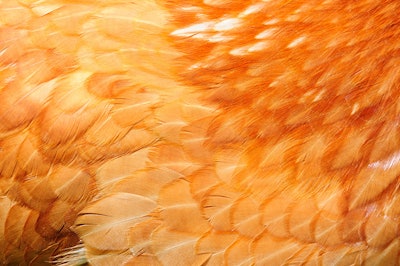
The next big thing in fashion could be fabric made of chicken feathers. Or at least, it will be, if University of Nebraska’s Dr. Yiqi Yang has anything to do with it.
“Chicken feather as a fiber will have a huge value,” Yang, the Charles Bessey Professor in Department of Textiles, Merchandising and Fashion Design at University of Nebraska-Lincoln explained, noting that “fiber price is currently higher than most other products by weight.”
Converting chicken feathers to fiber could cost only 70% of the production costs for wool and silk. They’re also a greener alternative to the petroleum-based materials – such as polyester and nylon – commonly used in the market today.
In addition, feather-based fibers offer sustainable benefits to the poultry industry, Yang said.
Feathers are a waste product of chicken processing and are typically converted into low-nutritional value animal feed or incinerated. With more than two billion pounds of feathers produced annually, this generates a lot of waste.
Transforming this byproduct into fabric could help reduce the environmental impact of poultry processing, improving the sustainability outlook of the entire industry..
Improving the performance of feather-based fabrics
Yang’s research focuses on devising and testing methods to improve the strength and color of fabric-based fibers.
These methods include cross-linking or finding ways to chemically bond long protein chains, such as keratin, a water-resistant protein in feathers, to create fabrics that perform and feel like the fabrics currently on the market.
“It’s not easy to make regenerated protein fibers from feathers,” said Yang.
In a recent study published in Sustainable Materials and Technologies, he tested the strength and durability of a cross-linking class known as saccharide aldehydes. The fabrics created with this process were stronger than wool in dry conditions and contained 90% of wool’s strength when immersed in water. Even better, the result was nontoxic and absorbed dyes easily.
“Technically, we’re ready,” he added. “We will make a garment from chicken feathers very soon. It will look like silk, but it’s 100% feathers.”
















